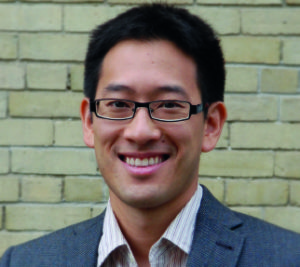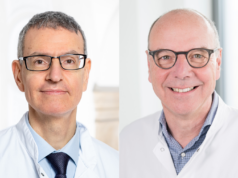
There is just a one in five chance that a potentially life-saving automated external defibrillator (AED) will be nearby when someone experiences cardiac arrest and a 20 to 30% chance that the nearby device will be inaccessible because it is inside a building that is closed, according to a study recently published in the Journal of the American College of Cardiology.
The study, led by Christopher Sun (Department of Mechanical and Industrial Engineering, University of Toronto, Toronto, Ontario, Canada) and others was a retrospective population-based cohort trial using data from the Toronto Regional RescuNET Epistry cardiac arrest database.
Currently, AED placement in Canada does not necessarily consider accessibility of the device during an emergency. Laws and practices regarding AEDs vary by state and locality in the United States. Out-of-hospital cardiac arrest has a less than 10% survival rate and is the cause of about 400,000 deaths each year in North America. Research has shown that immediate access to an AED greatly increases a person’s chance of survival; however, use of AEDs in public is not prevalent due to many issues, including concerns of legal liability, confusion on training requirements, general awareness and access.
While research has been conducted to determine locations where cardiac arrest is most likely to occur and, as a result, where AEDs should be placed geographically, this research assumes all AEDs are available and accessible 24 hours every day. Therefore, Sun et al explored AED access to determine if AED availability is significantly overestimated when hours of operation are not considered and if accounting for hours of operation when determining AED locations can provide better coverage.
All public out-of-hospital cardiac arrests occurring January 2006 to August 2014 in Toronto were looked at. Locations included public buildings, places of recreation, industrial facilities and outdoor public spaces, but not hospitals or nursing homes. Sun et al compared that to a list of registered AEDs in Toronto as of March 2015. AED registration is voluntary, but according to researchers, unregistered AEDs are more likely to be privately owned and located in places where a bystander would not be able to access them.
Toronto had 2,440 cases of out-of-hospital cardiac arrest during the study period and 767 AED locations. Of the AED locations, 542 (73.5%) were not open 24 hours a day and 211 (28.6%) were closed on weekends. Of the total number of out-of-hospital cardiac arrests, 451 were located near an AED but only 354 were located near an AED when the AED was accessible, resulting in a coverage loss of 21.5%. When researchers just looked at cardiac arrests during evenings (4:00pm to 12:00am), nights (12:00am to 8:00am) and weekends, which is when the majority of all out-of-hospital cardiac arrests occur, coverage loss increased to 31.6%.
The researchers concluded that a significant proportion of out-of-hospital cardiac arrests occur close to a public AED that is inaccessible at the time of the arrest, and a model that accounts for both location and availability when determining AED placement has the potential to significantly increase the likelihood of accessing an AED when needed. Also, government legislation mandating all AEDs must be registered with emergency medical services dispatch centres and accessible to the public 24/7 would improve access to AEDs.
The authors said that coverage is only one issue, and AED coverage does not necessarily equal survival because coverage does not mean the AEDs are being used.
“Accessibility is only one piece of the larger puzzle in optimising public defibrillator use and bystander response in an emergency,” says Timothy CY Chan, senior author of the study and director of the Centre for Healthcare Engineering at the University of Toronto.
In an accompanying editorial comment, Robert J Myerburg, a professor of medicine at the University of Miami Miller School of Medicine, writes the study is important and should be included in planning strategies for AED locations, but society would benefit more by both achieving better outcomes after out-of-hospital cardiac arrest and reducing the number that occur in the first place.
“Now we need a parallel effort to develop a roadmap for improving prediction and prevention of out-of-hospital cardiac arrest,” he says.
This study was funded by the ZOLL Foundation.









